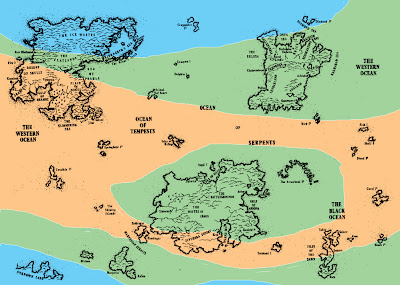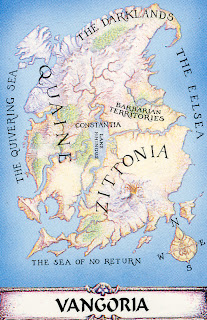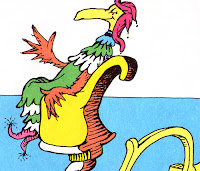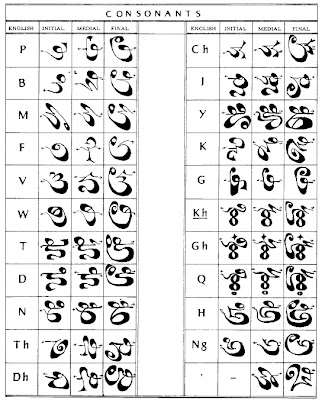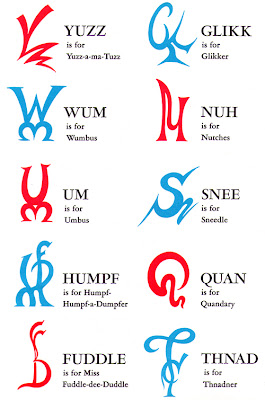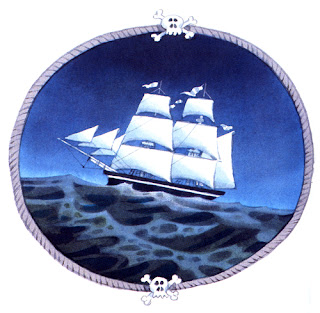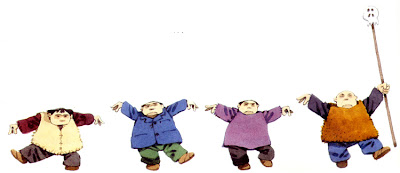 |
Ian Livingstone
(from Digiplay, 2011a). |
I’m gutted. Ian Livingstone, co-creator of Fighting Fantasy, former editor of White Dwarf, and ex-mastermind behind Games Workshop, was in Bangkok on Friday to give the keynote speech ("Capitalizing on Great Ideas: from Games Workshop to Tomb Raider", Digiplay, 2011b), at the opening of “DigiPlay: Thai-UK Digital Festival” and I had no idea. DigiPlay, held at the Thailand Creative and Design Centre until May 1 (so I can still visit at least!), is part exhibition, part trade-show, showcasing UK and Thai companies involved in game design and digital entertainment. Perhaps I should buy an iPad and get down there with Catacombs of the Undercity…
Anyway, local newspaper The Nation has reported on the opening though it doesn’t make clear whether the pull-quotes in the article from Ian Livingstone were delivered as part of his speech or an interview afterwards. Regardless, I’ll reproduce here all the comments by Ian Livingstone as follows:
 |
| DigiPlay! (from Mudlark, 2011). |
“The global revenue of games sales today – both online and offline – is about US$50 billion a year – bigger than the box office, DVD, book and music industries combined. Young and old, male and female, enjoy the experience. It’s mass market entertainment industry.”
“Gaming has moved from a niche market to mainstream entertainment with many platforms available today from PCs, consoles, handheld devices, smartphones and online portals. It’s no longer necessary to have a huge team to produce a game, a small team can reach global audiences. The days are gone where you sell a limited number of games for high prices; today you can sell to millions of people for a very small price.”
“The success of Angry Birds lies in its elegant way of operation – using a touch screen device in a satisfying and simple way. It’s easy to play and deals with an emotional response and the human spirit. It generates gameplay that makes you want to play again and again. Just one more time to reach achievement – feeling yes, I can make it!”
“Among three things – gameplay, technology, and graphics, the most important thing to me is gameplay, that’s the value of replay. Satisfaction is playing the game, not looking at it.”
Online games [are the next big things]. People need a game that’s enjoyed together with friends and family rather than one that’s won as a solo experience. Rising penetration of broadband and fast processor PCs, those can make things happen. Farmville on Facebook is a great game. It promotes gameplay and is a kind of social engagement too.”
“The opportunity is open to all. Angry Birds was conceived by a small team. Thai creators are equally as capable. The game character and content should be global. It’s important to lead people to think about good things in your game like problem solving or brain training, not violence.”
(all from Pholdhampalit, 2011, p. 1B, bold emphasis by me)
 |
| Ian Livingstone interviewed in Bangkok (from Tiwa, 2011) |
It’s an interesting article, and I certainly intend to visit the exhibition, but I’ve highlighted three things that stood out for me:
Replay value: Ian Livingstone’s obviously learned his lessons from Crypt of the Sorcerer or Armies of Death.
Family enjoyment beats solo experience: Fighting Fantasy strike one!
No violence: Fighting Fantasy strike two!
Of course, we’ve been here before. Back when the 25th Anniversary Edition of The Warlock of Firetop Mountain was released, we were told:
In 2005 the first brand-new [Fighting Fantasy] book for ten years was published. Written by Ian [Livingstone] Eye of the Dragon played on the strengths of the original series while at the same time reflecting Ian’s experience gained over fifteen years in the world of computer and video games.
(Jackson & Livingstone, 2007, p. 206, bold emphasis by me)
Anyone who thinks the above paragraph is true should consult the following reviews of Eye of the Dragon:
I've reached a saddening conclusion: despite being one of the pioneers of interactive fiction, Ian Livingstone isn't and never has been that good at writing it. I won't deny I enjoy Forest of Doom and Deathtrap Dungeon on one level, but I first read them when I was nine and expected less from books back then. Not to mention I have fond childhood memories now. Caverns of the Snow Witch and Island of the Lizard King aren't bad gamebooks, but "bland" sums them up accurately. Unlike the Golden Dragon book of the same name, which was one of the best entries in its all too short series, Eye of the Dragon is an Ian Livingstone book of the absolute worst kind. I'm not familiar with the short adventure from Dicing with Dragons this book is adapted from, but if it's anything like this, Ian should've left it alone.
I've never particularly enjoyed dungeon crawls and this book reminds me of the worst reasons why. You wander from room to room, fighting a bevy of random and frustratingly bland monsters, finding a bunch of annoying vague items where every single one is as likely to curse you as save your butt, and constantly face the soul-shattering decision of whether to choose the boring left passage or the boring right passage. And just why is there someone operating a general store in this isolated, monster-infested dungeon? If you were going to let the player buy supplies, fine, but why couldn't it have been before he got to the dungeon? The way it's done is almost [parody-like].
Besides the genius who makes a living from a shop in a hidden dungeon, what are such a random collection of creatures as a BLACK DRAGON, MASTER SWORDSMAN and even a boss monster stolen wholecloth from the underrated House of Hell -- right down to the only weapon that can hurt him -- doing in this isolated dungeon? If it were some madman's idea of a trial of champions that'd be one thing, but it's just a collection of stone rooms hidden beneath the forest floor.
Even if you're willing to put up with all this and a sidekick named Littlebig, all you've got to look forward to is a climactic battle with a dull villain and an ending full-on as lame as the one in Crypt of the Sorcerer. While I'm grateful to Ian for the fact that Fighting Fantasy exists, this book proves that if anything his powers have only dulled with age. Let's hope if Ian contributes another book to the new line it's at least something he's buckled down and done from scratch.(Fireguard, 2009)
And here:
Nothing is better than the brilliant choices, the awesome plot and the wonderful writing and imagination that pour forth from this book.
Choosing [repetitively] between the right passage and the left passage, without knowing anything about either is what makes Fighting Fantasy books so awesome, so let's do it twenty times in a book. And other brilliant choices like when you see a plain treasure chest in the room, do you open it or leave?! It took me centuries to decide if I should open the unguarded treasure filled chest, or walk off. Other brilliant choices include deciding whether to throw 1 gold coin into a non functioning wishing well, staring into a mirror with a 50 foot IT'S A TRAP sign, and choosing whether to open the door. AGAIN.
This is deeply engaging book, and I could feel every brain cell in my head being put into full use, especially when I met other humans, and I was confronted with the thrilling attack for no reason-talk-leave choice AGAIN. WHOMG!
And the challenges you go up against are so imaginative, you’d think they were divinely inspired. I mean you will know true fear when you face the likes of a GOBLIN, a GIANT SPIDER or even an EVIL WIZARD.
And MAN the plot and writing of this book are brilliant. Some dude has found some stature in the bottom of a dungeon in Darkwood forest. The statue is worth 335,000 gp, because people in Titan like to pay large amounts of gold for crap. And naturally, rather than sell the statue and retire in luxury, the old owner decided to put in a dungeon and somehow fill it with monsters and obvious traps. No one would think to look in there!
And naturally when some guy asks you to drink slow acting poison that will kill you in two weeks, you see no problem at all with doing so. But all though he intends to screw you, he was at least courteous enough to switch his poison with grape juice, ruining his brilliant evil plan.
And of course, although you’ve been warned that touching the statue without the two emeralds will result in your death, if you reach the statue with one emerald, instead of looking down one of the exciting right/left passages, you touch anyway. SMART.
Those of you with one or more brain cells may have figured out this is something of a joke review.
Humour aside, this is a merit-less piece of crap. If anyone but Ian Livingstone or Steve Jackson had submitted this crap to Wizard Books, they'd have burnt it into little cinders.
It really is nothing more than a bunch of poorly thought out clichés meshed together. The choices are every bit as inane and stupid as I have made out, and there is nothing of any merit here. If Wizard Books publish any more new adventures, I seriously pray they're better than this.
(Paul T., 2005)
Fighting Fantasy strike three!
Of course, the moral to this story is that you can give someone an OBE or make someone Life President of Eidos, but it still doesn’t mean that they know what they’re talking about, or understand what made their initial venture so wildly successful. Therefore, as Ian himself says, the opportunity is still open to all.
If you want to read an online version of the news article, you can do so here.
References
Paul T. (2005, May 3). Paul T.’s thoughts on Eye of the Dragon. Review posted to
Pholdhampalit, K. (2011, March 27). Gaming’s golden age. The Nation, p. 1B.















